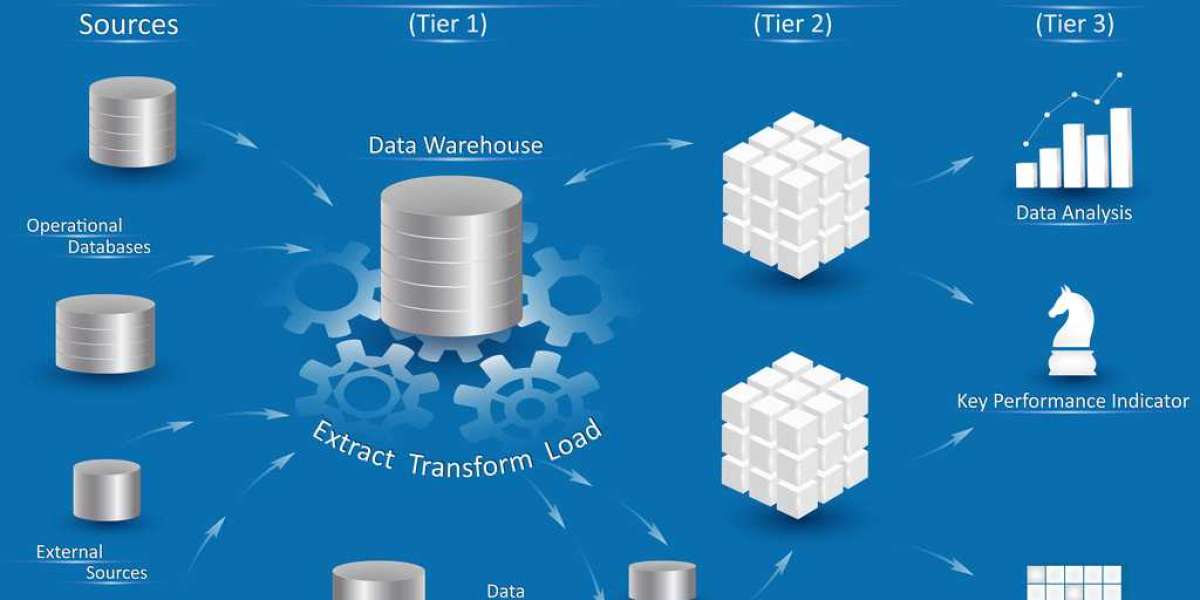Unlocking Business Insights: A Deep Dive into Modern Data Warehousing Solutions
In today’s data-driven world, businesses are generating more data than ever before. From customer interactions and sales transactions to social media engagement and IoT sensor data, the challenge isn’t collecting the data—it’s making sense of it. That’s where data warehousing solutions come into play.
What is a Data Warehouse?
A data warehouse solutions is a centralized repository that stores integrated data from multiple sources. It enables organizations to perform complex queries, reporting, and analytics without impacting operational systems. Unlike traditional databases optimized for transactions, data warehouses are designed for analysis and decision-making.
Why Businesses Need Data Warehousing
Unified View of Data: A data warehouse pulls together data from disparate sources—CRM, ERP, social platforms, etc.—into a single, consistent view.
Improved Decision-Making: With clean, historical, and structured data, business leaders can make informed, data-backed decisions.
Scalability and Performance: Modern cloud-based warehouses scale seamlessly with business needs, handling massive volumes of data efficiently.
Compliance and Governance: Centralizing data allows for better control over data security, lineage, and regulatory compliance.
Popular Data Warehousing Solutions
1. Amazon Redshift
A fully managed cloud data warehouse from AWS. It supports petabyte-scale data, fast query performance, and seamless integration with the AWS ecosystem.
Best for: Enterprises already leveraging AWS services.
2. Google BigQuery
A serverless, highly scalable data warehouse designed for fast SQL queries using the processing power of Google infrastructure.
Best for: Real-time analytics and businesses already using Google Cloud.
3. Snowflake
Cloud-agnostic and highly flexible, Snowflake separates storage and compute, allowing independent scaling. Its architecture supports data sharing and real-time collaboration.
Best for: Multi-cloud strategies and organizations needing flexible, modern analytics.
4. Microsoft Azure Synapse Analytics
Combines enterprise data warehousing with Big Data analytics. It offers deep integration with Microsoft products like Power BI and Azure ML.
Best for: Businesses invested in the Microsoft ecosystem.
Key Features to Look for in a Data Warehouse
ETL/ELT Support: Streamlining the process of moving and transforming data.
Real-Time Data Ingestion: For up-to-the-minute insights.
Data Security and Compliance: Encryption, access controls, and audit trails.
Machine Learning Integration: Native support or seamless connection to ML platforms.
Cost Efficiency: Pay-as-you-go pricing, storage-compute separation, and autoscaling.
Choosing the Right Solution
Selecting a data warehouse depends on several factors:
Volume and variety of data
Existing cloud infrastructure
Analytics and BI needs
Budget and scalability requirements
It’s not about picking the "best" platform, but rather the one that aligns with your business goals and tech stack.
Final Thoughts
In a world where data is a strategic asset, a robust data warehousing solution isn’t just a nice-to-have—it’s a competitive advantage. Whether you're a startup looking to centralize data or an enterprise seeking to modernize analytics, the right data warehouse can unlock insights, streamline operations, and fuel innovation.











